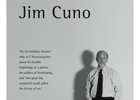
Angles in America at Rhona Hoffman Gallery
Rhona Hoffman Gallery kicked off the gallery season with Angles in America, a group-show curated by SAIC visiting lecturer Terry R. Myers. The premise of the exhibition is a “soft” take on geometry and abstraction in American art. According to Myers, the works, spanning four decades, manipulate the “shapes and sensuality of geometry,” and provide an examination of “inconspicuous surface level expressions” in everyday life.
Emotion meets engineering. Intuition meets science. Underlying truths meet surface and materialism. These themes, when considered in the abstract, could easily overwhelm. However, because this is a small exhibition, its scope is necessarily reduced to a select group of seven artists – Steve Keister, Jim Iserman, Gordon Matta-Clark, Robert Overby, Mary Heilmann, Laura Riboli and Jennifer West – who represent only a few of the issues at stake.
Myer’s selection makes some interesting connections. For example, four video works by two artists are collected together in Hoffmann’s back room, forming an unexpected merging of the practices of Jennifer West and Laura Riboli. Riboli’s whimsical animations of everyday objects – aluminum foil moves from a crushed state into a rectangular pyramid, and crystals dance in a landscape – provide a playful narrative to bounce off West’s flickering abstractions.
West’s films most appropriately seem to embody Myers’ term “ambient materialism.” Roadmap between LA and Seattle (shortened title), 2008, is a digitized version of a 16mm film covered in Gatorade, gasoline, doughnuts, energizer pills and tumbleweed scratches. Occasionally, figures appear for a millisecond, amongst the colored, flashing forms, giving the viewer a hint of the underlying surface of the original film, and offering up a pleasing paradox about the meaning of “surface.”
The other moving-image work in Angles in America is by the most renowned artist in Myer’s selection: Gordon Matta-Clark’s Tree Dance, 1971. The camera points up at human figures dangling from a large tree, fabric is caught in the branches and billows into irregular shapes, and long rope ladders fly about in the wind. The film is black-and-white and silent, and seems to connect with the geometry theme loosely but evocatively by creating an entire scene of interlocking lines.
Angles in America contains some more straightforward inclusions – Jim Iserman’s cotton and foam cube and Mary Heilmann’s prints are more obviously “geometric” in their abstraction of vision – however Myers’ expansion of the term geometry would make Cézanne proud.
Details:
Angles in America, Rhona Hoffman Gallery, 118 N. Peoria St, through October 11.







